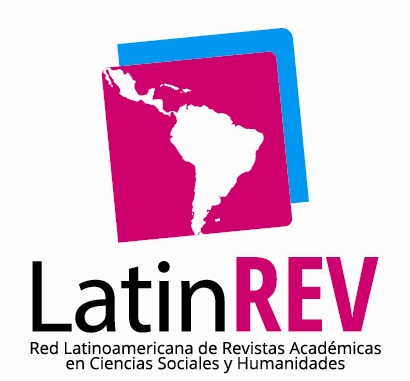Intervención del trabajador social en violencia y movilidad humana: gestión de casos desde la práctica profesional
Resumen
La interrelación entre violencia y movilidad humana plantea grandes desafíos para las poblaciones vulnerables, requiriendo intervenciones efectivas por parte de los trabajadores sociales en contextos de migración forzada. Este análisis enfatiza la necesidad de un enfoque integral que combine la protección de los derechos humanos y el bienestar psicosocial de las víctimas, destacando un creciente interés académico en esta área desde 2022, aunque la baja producción por autor refleja barreras en la investigación. Entre las principales limitaciones se encuentran la fragmentación de servicios entre protección infantil y atención a la violencia doméstica, lo cual dificulta la implementación de intervenciones coordinadas. La revisión sugiere que una colaboración interdisciplinaria es esencial para responder a las complejas necesidades de los desplazados, integrando el contexto eco-social y psicosocial para crear espacios seguros y proporcionar apoyo adecuado. Además, la participación activa de los afectados y el enfoque de capacidades contribuyen significativamente a su resiliencia y bienestar a largo plazo, especialmente en casos de violencia de género.
Descargas
Citas
Arkow, P. (2020). Human–Animal Relationships and Social Work: Opportunities Beyond the Veterinary Environment. Child and Adolescent Social Work Journal, 37(6), 573-588. Scopus. https://doi.org/10.1007/s10560-020-00697-x
Bergman, A.-S., Arnesson, K., & Berggren, U. J. (2023). Child protection investigations by private consultants or municipally employed social workers: What are the differences for children? Journal of Social Work, 23(1), 103-121. Scopus. https://doi.org/10.1177/14680173221109710
Gatfield, E., O’Leary, P., Meyer, S., & Baird, K. (2022). A multitheoretical perspective for addressing domestic and family violence: Supporting fathers to parent without harm. Journal of Social Work, 22(4), 876-895. Scopus. https://doi.org/10.1177/14680173211028562
Holt, S., Elliffe, R., Gregory, S., & Curry, P. (2023). Social Workers Response to Domestic Violence and Abuse during the COVID-19 Pandemic. British Journal of Social Work, 53(1), 386-404. Scopus. https://doi.org/10.1093/bjsw/bcac119
Jiménez, M. G. G., & Otero, L. M. R. (2019). Imaginary on intervention in biphobic bullying in Galician social workers. Alternativas, 26, 35-58. Scopus. https://doi.org/10.14198/ALTERN2019.26.02
Maarefvand, M., Ghiabi, M., & Nourshargh, F. (2023). Social work post-disaster response in Iran: A case study of the 2019 mass flooding in Poldokhtar, Lorestan. International Social Work, 66(2), 547-567. Scopus. https://doi.org/10.1177/00208728211018742
Marais, C., & Van Der Merwe, M. (2016). Relationship building during the initial phase of social work intervention with child clients in a rural area. Social Work (South Africa), 52(2), 145-166. Scopus. https://doi.org/10.15270/52-2-498
Muridzo, N., Chikadzi, V., & Kaseke, E. (2018). Challenges faced by professionals working in child sexual abuse multi-sectorial forums: A case of the victim-friendly system in Zimbabwe. Social Work (South Africa), 54(4), 452-468. Scopus. https://doi.org/10.15270/54-4-672
Nikupeteri, A., Laitinen, M., Gupta, A., & Mikkonen, E. (2023). Using the Capability Approach in Social Work with Children Experiencing Post-Separation Parental Stalking. British Journal of Social Work, 53(2), 900-920. Scopus. https://doi.org/10.1093/bjsw/bcac163
Olsson, H., & Bergman, A. (2022). From silence to recognition: Swedish social services and the handling of honor-based violence. European Journal of Social Work, 25(2), 198-209. Scopus. https://doi.org/10.1080/13691457.2021.1882395
Piippo, S., Notko, M., Husso, M., & Carter Anand, J. (2022). Framing Social Work Discourses of Violence Against Women. Insights From Finland and India. Affilia - Feminist Inquiry in Social Work, 37(3), 487-504. Scopus. https://doi.org/10.1177/08861099211040906
Pretorius, E. (2020). A collaborative partnership between school social workers and educators: A vehicle to address the social contexts of learners and quality of education in south Africa. Social Work (South Africa), 56(2), 138-156. Scopus. https://doi.org/10.15270/56-2-817
Rose, S. M., Hatzenbuehler, S., Gilbert, E., Bouchard, M. P., & McGill, D. (2016). A Population Health Approach to Clinical Social Work with Complex Patients in Primary Care. Health and Social Work, 41(2), 93-100. Scopus. https://doi.org/10.1093/hsw/hlw013
Ross, B., Rotabi, K. S., & Maksud, N. (2015). From the Evidence of Violence Against Children to a Prevention-Oriented Response in Malawi: Planning for Social Services with a Public Health Model for Social Work Engagement. Global Social Welfare, 2(4), 147-158. Scopus. https://doi.org/10.1007/s40609-015-0036-y
Snoubar, Y., & Duman, N. (2015). Using social holistic approach in working with children who are in the war zone. Mediterranean Journal of Social Sciences, 6(2S5), 231-237. Scopus. https://doi.org/10.5901/mjss.2015.v6n2s5p231
Vseteckova, J., Boyle, S., & Higgins, M. (2022). A systematic review of parenting interventions used by social workers to support vulnerable children. Journal of Social Work, 22(4), 992-1030. Scopus. https://doi.org/10.1177/14680173211037237
Derechos de autor 2024 Lady Gabriela Guerrero Castro

Esta obra está bajo licencia internacional Creative Commons Reconocimiento 4.0.











.png)




















.png)
1.png)


